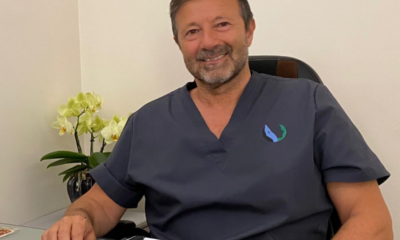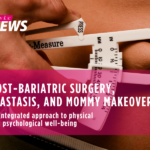Revée pills
Weight loss and aesthetic surgery: synergy for well-being

The journey towards weight loss can be a complex and often frustrating challenge. For many, aesthetic surgery represents an effective solution to achieve physical fitness goals that seem unattainable with diet and exercise alone. This combination of medical interventions and lifestyle changes can transform not only the body but also personal confidence and well-being, paving the way for a new life of health and satisfaction.
Aesthetic surgery has evolved significantly in recent decades, becoming a crucial resource for those seeking to improve their appearance and address the challenges associated with being overweight and obese. While sustainable and healthy weight loss is primarily the result of a balanced diet and regular exercise, aesthetic surgery offers solutions to tackle stubborn fat deposits and reshape the body after significant weight loss.
Body contouring after weight loss: liposuction
Losing weight requires time, dedication, and a change in lifestyle. However, despite these efforts, certain areas of the body can resist diet and exercise. This is where aesthetic surgery steps in as a powerful ally, offering procedures like liposuction, abdominoplasty, and thigh lifts, which can help remove excess fat and reshape the body.
Liposuction is one of the most popular aesthetic surgery procedures for localized weight loss. This technique allows for the removal of fat deposits in specific areas of the body, such as the abdomen, hips, thighs, buttocks, arms, and neck. Liposuction is not a method for weight loss but a treatment to sculpt the body and improve proportions. New slimming techniques are also emerging, one of which is Subcutaneous LipoEmulsion (LES). LES differs from traditional liposuction by focusing on emulsified fat, avoiding mechanical damage to the tissue during aspiration.
«The treatment is much less invasive and traumatic. It allows for a very rapid recovery. Within twenty-four to forty-eight hours, patients return to their work activities», comments Kiran Degano, a specialist in reconstructive and aesthetic plastic surgery.
The role of bariatric surgery after weight loss
For obese patients, bariatric surgery can be the first step towards significant weight loss. Procedures such as gastric bypass, sleeve gastrectomy, and adjustable gastric banding help reduce calorie absorption and promote sustainable weight loss. After reaching the desired weight, patients can opt for aesthetic surgery to remove excess skin and further enhance their physical form. This is known as body contouring, which is not just about aesthetics but also functionality. This branch of plastic surgery excludes the face, focusing mainly on the abdomen, breasts, and thighs. Body contouring techniques are particularly suitable for post-bariatric patients who, after undergoing restrictive or bypass procedures, lose up to 60, 70, or even 80 kg of weight.
«The typical body contouring patient is someone who has experienced significant weight loss, resulting in volumetric excesses», explains Valerio Cervelli, professor of plastic, reconstructive, and aesthetic surgery at the University of Rome Tor Vergata and head of the plastic, reconstructive, and aesthetic surgery specialization school. «This is sometimes due to pregnancies. Women, especially if they have had twin or multiple births, may have a body affected by these events, with associated conditions such as diastasis of the rectus muscles, requiring various corrections».
Abdominoplasty: reconstructing the abdomen after weight loss
Abdominoplasty, or abdominal reshaping surgery, is another common procedure among those who have lost a significant amount of weight and are left with loose and flaccid skin and muscles in the abdomen. Abdominoplasty removes excess skin and repairs abdominal muscles, creating a flatter and more toned abdominal profile. This procedure not only improves the aesthetic appearance but can also help strengthen the abdominal wall, improving posture and reducing back pain.
«There are a series of post-operative tools that help reduce the complications of abdominoplasty», says Dr. Francesco Russo, a specialist in plastic, reconstructive, and aesthetic surgery in Milan. He explains how abdominoplasty can produce results in a short time and help reshape body lines.
«With abdominoplasty, excess skin is removed from the abdominal region», the doctor explains. This procedure targets formerly obese patients who have undergone massive weight loss and have excess skin in the abdominal area.
Thigh and arm lifts: removing excess skin
Similar to abdominoplasty, thigh and arm lifts are suggested to those who have lost a significant amount of weight and are left with excess skin in these areas. Thigh lifts remove sagging skin and tighten the inner and/or outer thighs, while arm lifts, also known as brachioplasty, reduce flabby tissue in the upper arms. These procedures contribute to creating a more toned and harmonious appearance, significantly improving the patients’ quality of life. This combination of interventions is done because the human body should be considered a single aesthetic unit. «The typical body contouring patient is someone who has experienced significant weight loss, resulting in volumetric excesses. This is sometimes due to pregnancies… requiring various corrections», recounts Valerio Cervelli, professor of plastic, reconstructive, and aesthetic surgery at the University of Rome Tor Vergata and head of the plastic, reconstructive, and aesthetic surgery specialization school.
Aesthetic surgery and weight loss represent an effective combination for those seeking to improve their physical appearance and overall well-being. It is important to remember that aesthetic surgery does not replace a healthy lifestyle but can be an essential complement to achieve the best results. Consulting with a qualified plastic surgeon is crucial to determine the most suitable treatment plan, considering the patient’s specific needs and expectations.




































